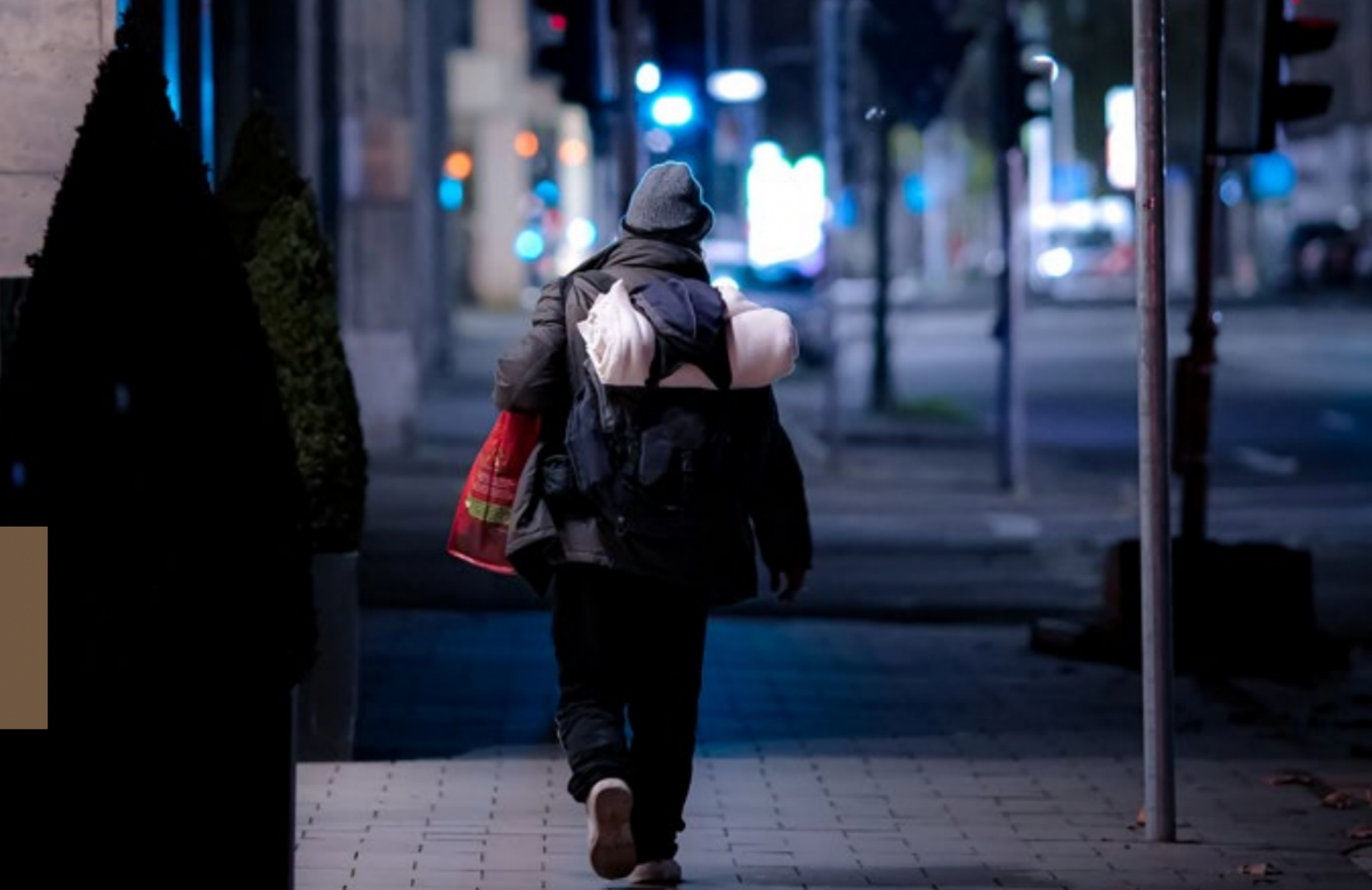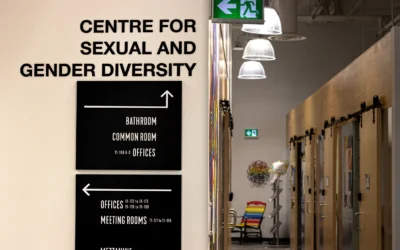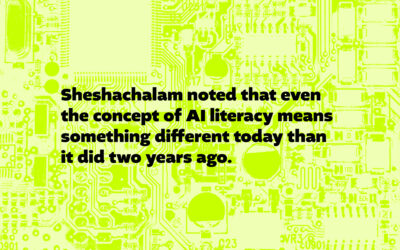In April 2021, the City of Edmonton introduced a new strategy for dealing with homeless encampments across Edmonton. They partnered with Homeward Trust, Boyle Street Community Services, the Bissell Centre, and the Edmonton Police Service to enforce encampment closures. The goal of the strategy is to “support the safety and well-being of people staying in encampments, housing them directly from encampments before enforcement and clean up action is taken,” according to their website
Both Homeward Trust and Boyle Street have had a positive experience working with the City on their encampment plan. “On the ground level, there’s actually quite a bit of collaboration between our outreach workers and the park rangers and the police. We probably have more collaboration with them on the ground level than we have in the past,” says Jared Tkachuk, senior manager of programs at Boyle Street Community Services.
“One of the great things about that table, the encampment resolution table, is that we are able to understand each other… and come together and actually address encampments in our community in a respectful manner,” says Mo Amin, the outreach project coordinator at Homeward Trust.
However, both Tkachuk and Amin say that housing people staying in an encampment before it is closed is no easy task. For example, the City notes on their website that high-risk encampments — encampments that feature more risks such as biohazards, needles, garbage, are larger in size, and may be located closer to school or playgrounds — are closed within one to three days of investigation.
Amin notes that it usually takes 52 days to get someone into housing, from the initial meeting to the move-in date.
“It’s very difficult to get housing timelines that align with (encampment) enforcement timelines,” says Tkachuk. “The City is kind of caught between people who are calling in complaints about encampments and want encampments gone and then trying to give enough time for workers to help support people into housing or at least indoors.”
Amin feels the same: “In terms of housing, there’s no such thing as fast because we’re dealing with a human being…. The community that we serve… (is) very complex, and their needs are very different than other communities.
Amin notes that even if people are ready to move into housing, there are other barriers — physical, mental, emotional, and spiritual needs — that need to be addressed first.
These barriers are especially evident for those experiencing chronic homelessness, explains Tkachuk. He says people who are chronically homeless tend to have more complicated issues such as degraded mental health, substance abuse, and physical health concerns. “Finding that person a home can take time,” he says. “And is there enough time that doesn’t infringe on the enforcement side? That’s really the tension.”
The pandemic has also left more people without a home, many of whom have never experienced homelessness before. Their needs are different from those who have been chronically homeless, and they require other supports.
Prior to the pandemic, a Global News article by Emily Mertz pointed out that there were 1,300 people in Edmonton experiencing homelessness. Today, this number has more than doubled to 2,800, according to a CBC article by Wallis Snowdon. Tkachuk says that about 1,000 more people have been added to Boyle Street’s housing list since the start of the pandemic.
Health restrictions have also complicated the situation. Amin explains that the restrictions can be problematic, especially because they are made largely without considering the needs of the houseless community and directed toward those who are more privileged. “If you even look at the QR code example, (the houseless) community does not have access to a phone,” he says. “So, if (they’re) relying on going to McDonald’s to get warmed up or get a cup of coffee that will allow (them) to sit there for a long period of time, but now (they) need a QR code, they (can’t access) that.”
Even concepts that we take for granted, such as physical distancing, become much harder in crowded encampments. “You and I… have the privilege to say, ‘Hey, give me space for a moment,’” says Amin, “social distancing is a privileged conversation.” But asking for space is not always something that the houseless community can always say
Those same health restrictions have also made it harder to house people indoors. Tkachuk says that during cold winter conditions, Boyle Street would usually accommodate 300 people indoors, but due to health restrictions, they were forced to reduce their capacity to 50.
“When people ask us, ‘Where am I supposed to go?’ We don’t have an answer for them,” says Tkachuk. “They’re going to have to find a place to go, and an encampment might well have seemed like a person’s best bet during this time when we didn’t have alternatives to provide.”
Both Tkachuk and Amin anticipate that health restrictions have led to an increase in encampments being formed across Edmonton. But encampments are far from permanent solutions. Tkachuk says an encampment usually only lasts a couple of weeks before it is shut down, forcing people to continuously move and find new spaces.
“If all you’re doing is enforcement,” Tkachuk says, “you’re really just shuffling people around between neighbourhoods and different public spaces. And we know that the solution… is to find people a home.”
While Amin says opening more shelters and increasing the capacity in existing shelters would take some of the pressure off of outreach teams trying to get houseless folks inside (and likely reduce the number of encampments in the city), it is not a long-term solution. “Being in a shelter doesn’t mean you’re in a home,” Amin says. “It’s not the solution; it’s just a Band-Aid that happens every year.”
And COVID is still an ever-present threat. “Our vulnerable Edmontonians are no different than the rest of us,” says Tkachuk. “They’re afraid of COVID, they don’t want to attract COVID, so they might be more (reluctant) to go to places that are going to be crowded, like shelters. They might feel that, ‘Hey, if I stay in an encampment by myself or just with a couple people around and I’m outdoors, that’s actually the best strategy to stay safe.’”
On top of growing pandemic pressures, the houseless community still faces issues like racism and houseless people are still often viewed as “criminals,” “troublemakers,” or “nuisances.” Amin says, “One thing that is disheartening at all times is the lens that our community is looked at…some of them are not looked at as human beings. They’re just a problem.”
This stigma creates its own set of barriers that are not easily solved.
Homeward Trust’s goal is to eliminate homelessness in Edmonton and reach “functional zero,” a term that refers to a situation where homelessness is “rare, brief, and non-recurring,” according to Homeward Trust’s website. But for that goal to become a reality, more funding is needed, especially when it comes to navigating the economic repercussions of the pandemic. “We need more focus on affordable, sustainable (housing that’s the) right fit for our folks…. That’s what’s worked in the past, and it continues to work,” says Amin. “We are after long-term sustainable housing for our community.”
As MacEwan University students, houselessness may seem like an issue that is too large to tackle, but every little bit of help counts. Homeward Trust and Boyle Street accept monetary donations year-round, and Tkachuk believes help and support from students comes in the form of education. “It starts with learning why,” he says. “Why are people experiencing homelessness in a country as wealthy as Canada? And once you go down that road of learning the context and learning different things even about (the houseless) folks we’re serving, it’s enlightening even as a human being and as a Canadian and as an Albertan.”
“That’s the best thing that MacEwan students could do because once you have the knowledge, then you figure out your place in trying to help.”
Visit Homeward Trust’s and Boyle Street’s websites to learn how you can become a part of the solution.
Note: A previous version of this article misstated Mo Amin’s job title as “outreach project manager” instead of “outreach project coordinator.” We apologize for the error.





0 Comments